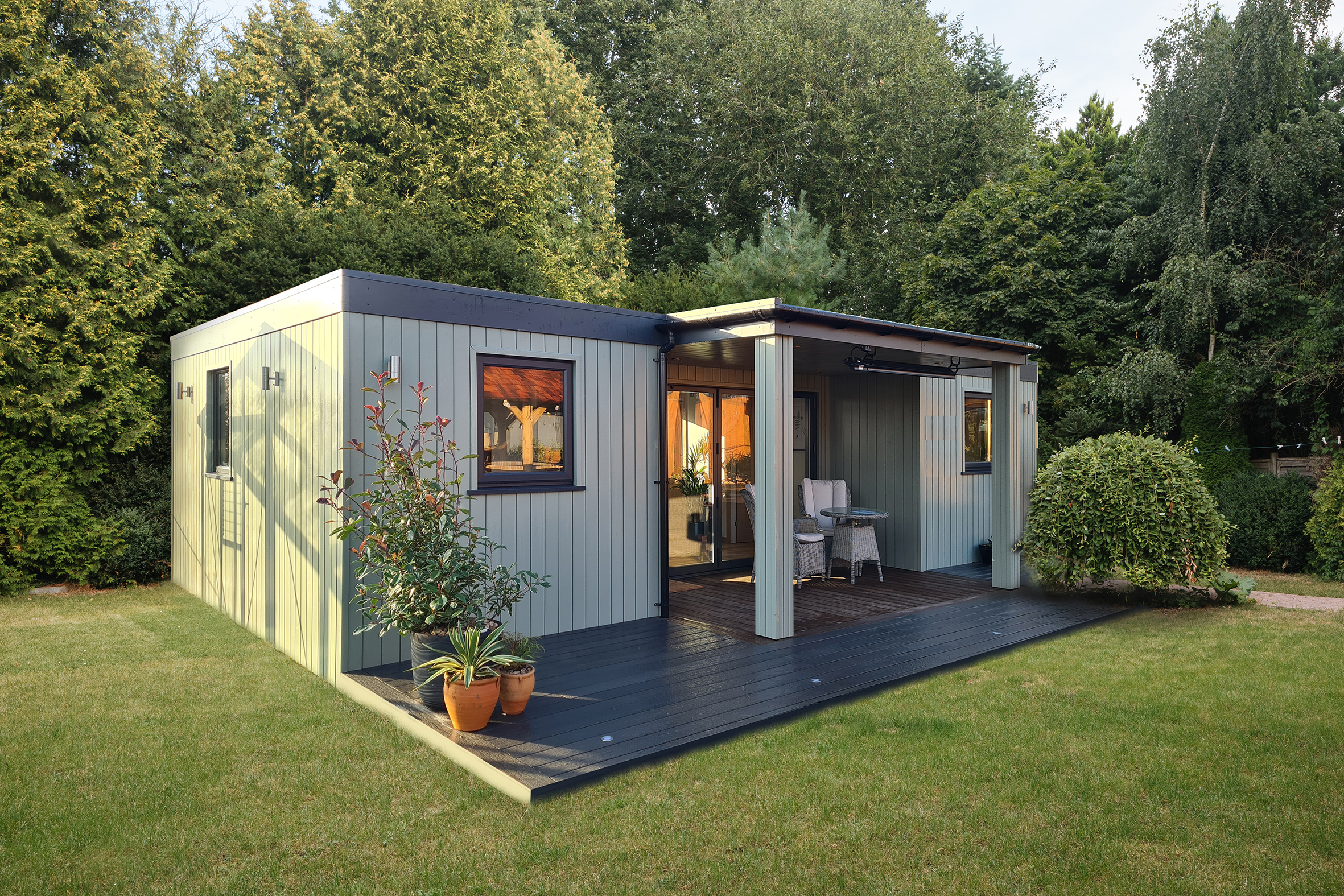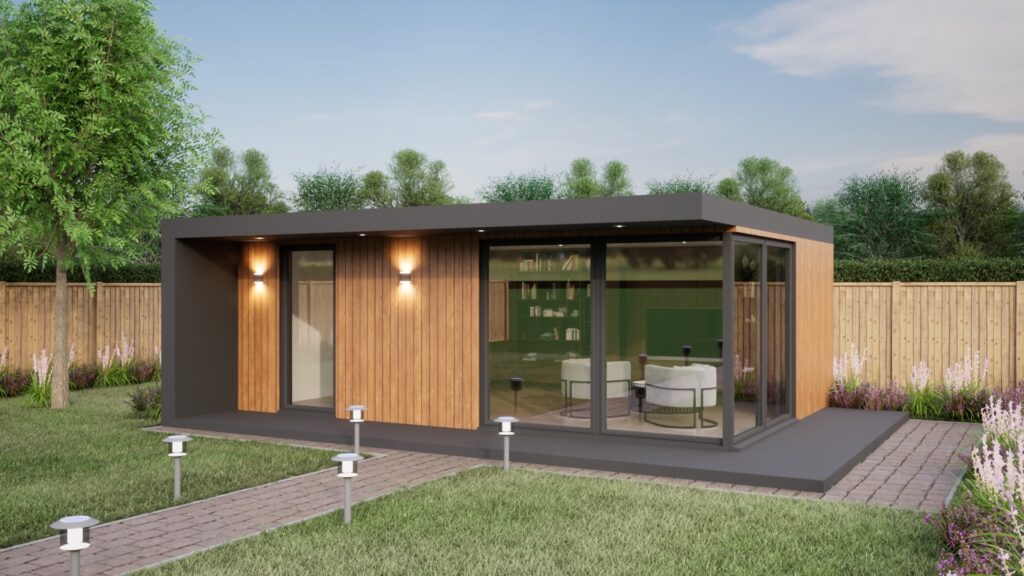Top Reasons On Planning Permission On Garden Sheds
What Planning Permission Do You Need For Gardens, Etc. In Terms Of Conservation Areas?Certain restrictions are in place for the construction of conservatories or garden rooms, outhouses or garden offices in conservation zones. These restrictions are designed to preserve the appearance and character of these areas. Here are key aspects to consider when planning in conservation areas.
Any building or extension that would otherwise fall under allowed development rights might require permission for planning in an area of conservation. Garden rooms, sheds or other outbuildings are also included.
Size and Scale
Any structure of any size could require approval for planning if they are thought to be detrimental to the character of the conservation zone. In designated zones, there are more strict restrictions on the size and shape of any new structure or extensions.
The property's location
It is more common to need planning permission for extensions and buildings located at the front or the sides of the home. If the rear structures are visible in public areas or affect the area's character it may be required to obtain permission for planning.
Materials and Design
It is important to choose design and materials that are compatible with the historic or architectural significance of the area. The selection of materials for any new construction or extension has to be compatible with the historical or architectural significance of the site. To ensure that these criteria are met, planning permission will be required.
Demolition:
Demolition of existing buildings or parts of them including outbuildings, boundary walls, typically requires planning permission in conservation areas to ensure that any modifications are consistent with the character of the area.
Height Restrictions
In conservation areas, there are more strict restrictions on height. Anything taller than 2.5 meters, and especially within 2 meters of the boundary, will require permission for development.
The Impact on the Surrounding Environment:
Planning permission is required when the proposed extension or building has an impact on the appearance or visual setting of the Conservation Area, as well as the views that cross the Conservation Area.
The use of the building
A garden room, outbuilding, or studio might not require permission to plan if its usage is allowed.
These are extensions and modifications:
Planning permission is generally required for extensions which exceed the specified size or volume limits or alter the exterior appearance. This applies to conservatories as well as other significant alterations.
Curtilage Structures:
In a conservation area or within the perimeter of a property that is listed requires approval from the planning department. This applies to any extensions, new outbuildings, or any alterations.
Protected Trees
Trees in conservation areas are usually protected. If the proposed development will affect any trees, you could require additional permits, such as tree works consent, alongside the permission to plan.
Local Authority Guidelines:
Local planning authorities can establish guidelines and limitations that are specific to each conservation zone. They may have specific rules for what is allowed and what's not, adapted to the specific characteristics of the area in question.
Planning permission is mandatory for conservation areas. This involves an in-depth analysis of the effect that the proposed extension or garden room, outhouse, conservatory or garden office would have on the historic and architectural characteristics of the location. Consultation with your local planning authority early in the planning process is essential to ensure that your plan conforms to all relevant laws and guidelines. Take a look at the most popular "composite cedar cladding" for more info including garden rooms, garden office electrics, copyright garden buildings, herts garden rooms, garden room conservatory, what size garden room without planning permission, garden rooms near me, outhouse buildings, insulated garden buildings, Tring garden rooms and more.

What Planning Permits Are Required For Garden Rooms, Etc. In Relation To Neighbourhood Concerns?
The concerns of the neighbors could be a significant element in determining whether permission to plan will be required for the construction of a garden area, conservatory, outhouse, garden office or extension. There are two crucial aspects to consider: Privacy and Overlooking.
A planning permit is required when a new construction may result in a loss of privacy due to the view of neighboring properties. The new building should not impact the people's living conditions.
Light loss or shadowing:
A planning permit is usually required if a proposed building could result in significant light loss or overshadowing of neighboring properties. The local planning authority will consider the impact of sunlight and daylight to adjacent properties.
Noise and Disturbance
Planning permission is required for the use of the garden or extension in activities that produce noise (such the use of a home office with clients, or as an workshop. The noise levels must be within acceptable limits and must not be disruptive to neighbors.
Visual Impact and Character
The style, appearance and the size of the new structure should be in keeping with the character of the neighborhood. Planning permission guarantees visual appeal and that the new development does not harm the aesthetics of the neighborhood.
Boundary Proximity
Planning permission is required for structures built near the boundary of a property in particular when the structure is taller than 2,5 meters or less than 2 meters. This is to avoid disputes and negative impacts on neighboring properties.
Shared access and Rights of Way
It is crucial to seek permission to plan if work will impact the shared access route or rights-of-way. This will ensure that they aren't adversely affected or blocked.
Oppositions from Neighbors
Consultation of neighbors on plans is permitted. If there are objections from neighbors, the planning authority will be able to consider these issues when deciding if to approve the application.
Impact on Property Values
Planning permission is typically required when significant changes in the value of the homes surrounding you are made. It may not be the sole reason, but it can still affect the final decision. Local authorities will be aware of the impact of these changes when making a decision.
Covenants and Deed Restrictions:
The property could have covenants or restrictions in deeds that must be adhered to regardless of the permit to build. These agreements can impact the harmony of the neighborhood by dictating what is permitted and what is not.
Construction Disturbance:
Planning permission might provide relief from disturbances created during construction like dust, noise, and traffic. Conditions may be imposed to minimize the impact on neighbors.
Impact of Infrastructure
If the new building places additional stress on infrastructure in your locality (e.g. parking, drainage or road use) Planning permits assures that the impact are assessed and handled in a manner that is appropriate.
Consultation with the community:
In some cases a larger community-based consultation is needed particularly if the project is controversial or large. This will allow for more democratic decisions, which takes into account the views of the community in which it is located.
In summary, concerns about the neighborhood's condition are crucial when deciding whether a garden room, conservatory or outhouse, garden office or extension is allowed. It is important to make sure that the project will not adversely impact on the living conditions of the neighborhood and privacy and light, sound or the overall look and feel. Check with the local planning authorities at an early stage of the process to address these issues. Check out the top maximum size of garden room for website advice including my outhouse, garden office, composite summer house, conservatories and garden rooms, insulated garden rooms, outhouse buildings, garden room planning permission, outhouse building, Tring garden rooms, insulated garden rooms and more.

What Are The Restrictions On Location Regarding Garden Rooms And Other Areas?
If you are planning to construct the garden room, conservatory, outhouse, extension or garden office The restrictions on the area will determine whether permits for planning are required. Here are the main aspects to be considered when determining the location The proximity of boundaries
Any structure within 2 meters of the property boundary cannot exceed a height of 2.5 meters. If the building's height exceeds this limit, planning permission is required.
The front of the property
The construction of structures on the principal elevation of the house (the front side) generally require permission from the planning department, since the permitted development rights do not usually allow forward extensions or buildings.
Front of the Property
Side extensions have to adhere to certain size and height limitations. They often require approval from the planning department if they go over the wall on the side of the house.
The back of the property:
The height and size of rear extensions and garden rooms at the rear of the property are restricted. If they exceed the allowed limits for development the planning permission is required.
Designated Areas
In National Parks, World Heritage Sites and Areas of Outstanding Natural Beauty there are stricter regulations. Any new construction, regardless of size, could require planning permission.
List of Buildings
Listing buildings are subject to strict rules. Any modification, addition, or extension will typically require planning permission and a listed building permit regardless of where it is located on the property.
Green Belt Land:
Green belt land is protected by strict rules on construction to preserve open space. A permit is usually required for any new construction or major changes.
Flood-prone Zones
In the event that the property is in an area that is at risk of flooding it is necessary to follow additional regulations to ensure that the proposed structure doesn't exacerbate the risks. It is possible that you will need planning permission and perhaps an assessment of the flood risk.
Urban vs. Rural Settings:
Urban and rural settings are typically governed in a different manner. Rural properties might have a more relaxed approach to the size and location of outbuildings. But this could be different.
Highways and Public Rights of Way
Planning permission may be needed in the case of structures that are located close to public rights-of-way, highways or roadways to ensure that it doesn't hinder safety, views, or access.
Shared Ownership or Leasehold Land:
If you own a property that are leasehold or part of, or shared ownership schemes, you may need to seek additional permissions whether from the managing entity or freeholder or planning permission according to the local laws.
Adjacent to Other Structures
It is possible to seek planning permission when an upcoming structure is to be constructed near existing structures or buildings, specifically on neighbouring property. It will guarantee that the building or land that is adjacent to it is not negatively affected.
It's always recommended to consult with the local planning authority in order to get specific advice tailored to your property's location and circumstances. The rules may differ according to local regulations. To avoid legal problems, it is essential to follow all applicable restrictions. Have a look at the recommended out house building for more recommendations including garden office electrics, how to lay decking on soil, garden room planning permission, composite garden office, ground screws vs concrete base, garden out house, copyright garden rooms, do you need planning permission for a garden room, outhouse for garden, garden buildings and more.
